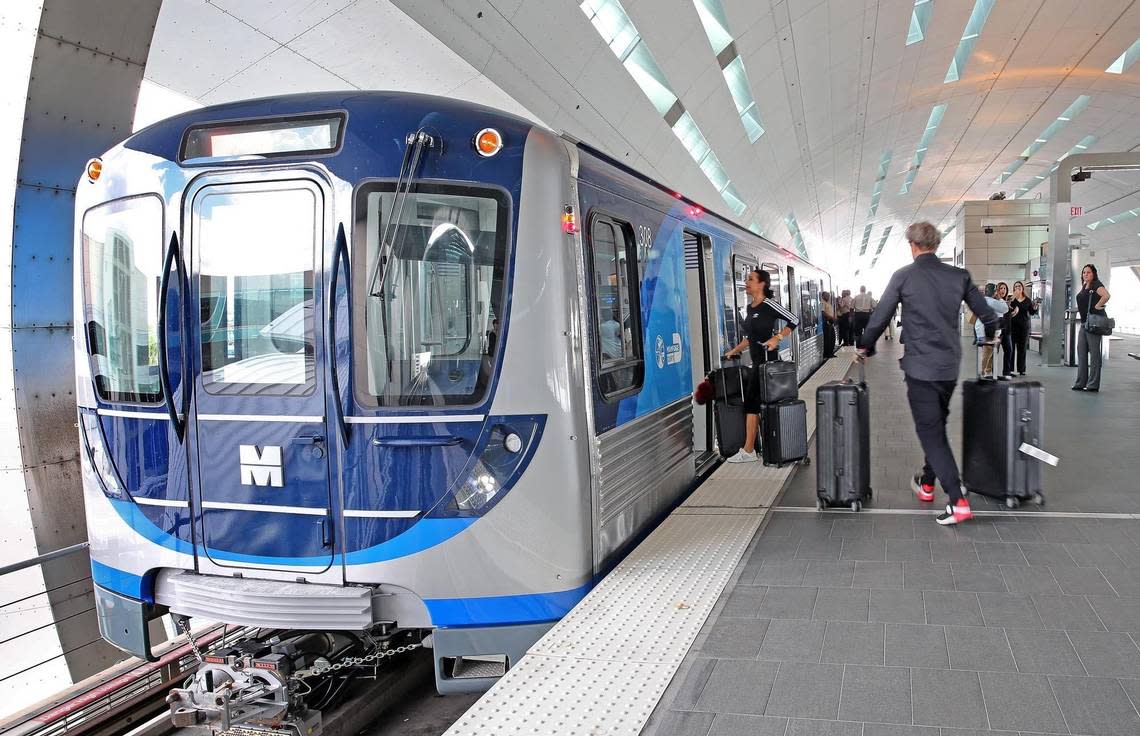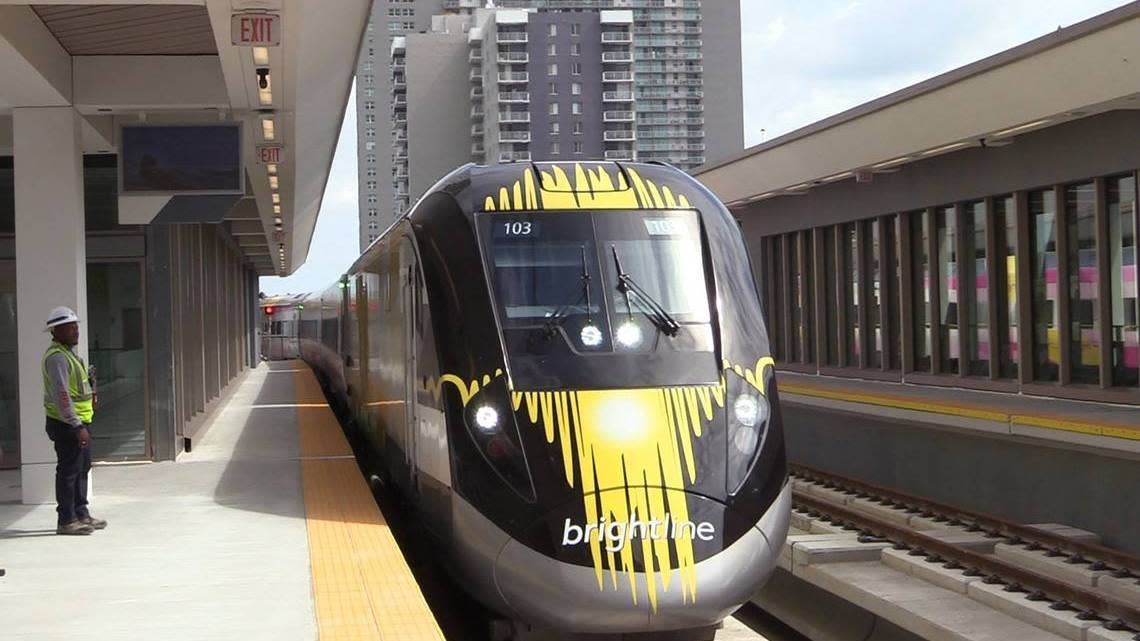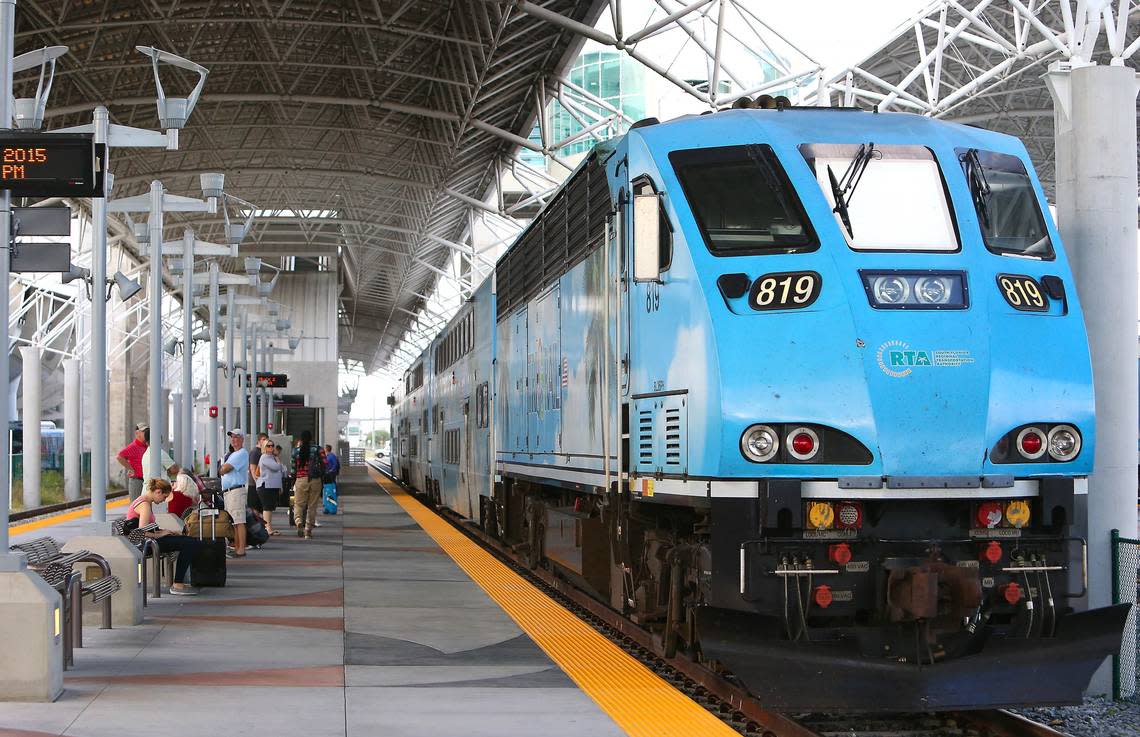How to find cheap gas near you — and options to get around South Florida without a car
Is the cost of living in South Florida straining your wallet?
Fuel. Groceries. Rent. It all adds up to a hefty price tag.
And while keeping track of weekly sales at Publix and other supermarkets is one way to save money, you won’t find a BOGO fuel sale at your local South Florida gas station.
However, some apps can help find the cheapest fuel near you. You can also carpool or take public transportation if you want to avoid fueling up. Some transit options are even free.
Here’s a South Florida guide to fuel and public transit:
Apps to find cheap fuel
These apps, available via the app store for Apple and Android, can help locate cheap fuel near you:
▪ Gasbuddy is a free app and website (www.gasbuddy.com) that lets you sort gas stations by price, distance, fuel type, payment method and ratings. The crowdsourcing app lets users report gas prices in real time, which can help others find gas, too. It also has an outage map, which lets people report if a station is open, closed or out of fuel.
The app tells you the average reported gas price in your area, including the lowest and highest cost. It gives directions to gas stations and lists amenities like car washes. It also lets people review and rate the gas stations.
▪ Waze is a free crowdsourcing app usually used to find routes with the least amount of traffic in real time. The app can also help people find nearby gas stations and indicates whether they have restrooms and parking. Like other gas apps, sometimes the gas prices listed can be several days old — it all depends on how often users update the prices.
READ NEXT: Which highways have a SunPass discount in Miami and the rest of Florida? What to know
▪ Gas Guru is run by Yellowpages.com. It lists gas prices and lets you search for amenities like a car wash. Just like other apps, it provides gas station information, including directions. The app gets gas station prices from the Oil Price Information Service and not user-entered data. However, the app lets users report inaccurate gas prices.
▪ GetUpside lets you compare the gas prices at thousands of gas stations in Florida. It also has a gas savings program to earn cash back on your gas purchases.
Transit options in South Florida
Free rides
▪ Some cities run free trolleys, including Doral, Coral Gables, Miami, Miami Beach and Miami Gardens. Route information, hours of operation and real-time tracking info should be available on the city’s website or through an app.
▪ Freebee, a free ride-sharing electric vehicle service, is available in more than a dozen areas across South Florida, including Coconut Grove, Florida City, Key Biscayne, downtown Miami, Miami Lakes, Hialeah, Miami Beach, Fort Lauderdale and Islamorada. Use the Freebee app to call a ride. Hours of operation vary by city and routes are short-distance, which means you can’t take a Freebee from Florida City to Miami Beach.
▪ People who drive select hybrid, electric or other low emission vehicles can register online to drive free on the Interstate 95 express lanes. People who drive motorcycles can use I-95 express free and don’t have to register.
READ MORE: Need a charge? What to know if you’re taking a Florida road trip in an electric car

Walk, ride a bike or hop on a jitney
▪ Consider walking or riding a bike, skateboard or roller blade. Not only is it good for the environment, but you’ll save money on gas and get some exercise in too. If you don’t own a bike, you could always rent one through Citi Bike Miami, a bike rental service with more than 160 stations across Miami Beach, Surfside, Bay Harbor Islands and Miami, including in Wynwood and Coconut Grove.
▪ Jitneys can help you get around Miami-Dade — if you know where to find one. The vehicles are run by private companies that are licensed by the Miami-Dade Department of Transportation and Public Works. Jitneys operate on routes where buses don’t and can drive through side streets if there’s a traffic jam, according to The New Tropic. To get on a jitney, you just flag it down when you see it, similar to a taxi. Fare prices range between $1.50 to $2, depending on the jitney.
Miami-Dade County Jitney Routes 2022 by Michelle Marchante on Scribd
Carpool and use express buses
▪ Consider carpooling or vanpooling with family, friends or coworkers and split the cost of gas. If you’re looking for people to carpool/vanpool with, there’s a carpool and vanpool ride-matching portal you can use. Another bonus: If you carpool/vanpool with at least three people (who are at least 16) to and from work/school, you can take the I-95 express lanes in Southeast Florida for free. Vanpool drivers also get to drive free on the I-75 express lanes. Whether carpooling or vanpooling, make sure to register online first because you’ll need a decal.
▪ If you carpool, vanpool, ride transit, walk or bike to work/school at least three times per week and live in Miami-Dade, Broward, Monroe, Palm Beach, Martin, St. Lucie or Indian River counties, you can get six free Uber, Lyft or taxi rides home a year as part of the Guaranteed Ride Home program. The free rides are for emergencies and unscheduled overtime. You’ll need to register online first. To request a ride, call 800-234-RIDE (7433).
▪ Consider taking the I-95 express buses in Miami-Dade and Broward counties, which can utilize the “Bus Only” lanes when the regular lanes are congested. Other express buses use Interstate 75, Interstate 595 and the Palmetto (SR 826). For prices, visit Miami-Dade and Broward’s transit websites.
▪ Before we continue with this transit list, a tip: You can request a free three-day transit pass through the Florida Department of Transportation’s South Florida Commuter Services website to figure out if taking transit is right for you.
Metrobus, Metrorail, Metromover

▪ Metrobus routes run across Miami-Dade County and into Broward and the Keys, including Miami Beach, Liberty City, Little Haiti, Little Havana, Key Biscayne, Miami Gardens, West Miami-Dade, Homestead and Florida City. Buses have free Wi-Fi and bicycle racks. The buses run from 5 a.m. to midnight daily, including holidays, with some routes providing overnight service.
▪ Metrorail runs along a 25-mile dual track with service to Miami International Airport, and stretching from Kendall through South Miami, Coral Gables and downtown Miami; to the Civic Center/Jackson Memorial Hospital area; and to Brownsville, Liberty City, Hialeah, and Medley in Northwest Miami-Dade. Metrorail stations have free Wi-Fi and bicycle racks, which can also be found in some rail cars.
▪ Metromover circles downtown Miami and extends to Brickell and Performing Arts areas from 5 a.m. to midnight daily. Destinations include FTX Arena, Bayside Marketplace and Miami Dade College’s downtown campus.
How much does it cost?
Metromover is free. Metrobus and Metrorail fare is $2.25 each way or $5.65 for a one-day pass. However, Metrobus and Metrorail transfers are free, although you will have to pay 95 cents if you’re transferring from a Metrobus/Metrorail to an express Metrobus route.
Miami-Dade Transit also has reduced fare options for groups of people, including K-12 and college students and Medicare recipients. Miami-Dade residents whose annual income is between $20,386-$27,180 can ride for half the price, while residents who make less than $20,385 may be eligible for free rides on Metrobus and Metrorail with the Transit Mobility EASY Card.
Brightline

▪ Brightline runs from downtown Miami with stops in Fort Lauderdale and West Palm Beach. Prices vary depending on when you plan to travel and if it’s a one-way or round trip. If you’re a frequent rider, the rail company recommends monthly travel pass options. For more information, visit gobrightline.com
Tri-Rail

Tri-Rail runs through 18 stations across Miami-Dade, Broward and Palm Beach counties.
The commuter train runs from Miami International Airport through Golden Glades in Miami-Dade County, Hollywood, the Broward airport, Deerfield Beach, and Boca Raton through Mangonia Park in Palm Beach County. Price depends on whether you’re doing a one-way ticket, a round trip and if it’s during the weekend or on a holiday.
Tri-Rail also offers a variety of discounts, including for students, seniors, and for a child or a person with a disability. Frequent riders should consider looking at 12-trip passes, monthly passes and regional passes. For more info, visit tri-rail.com
Amtrak
The nationwide Amtrak train service has stations across Florida, including in Delray Beach, West Palm Beach, Deerfield Beach, Fort Lauderdale, Hollywood and Miami/Hialeah. Prices and discounts vary depending on where you’re going and when. For more info, visit amtrak.com/home.
